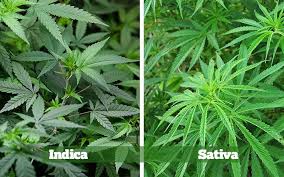Before I was an avid marijuana supporter and experienced cannabis user, I thought all weed was the same. But I’m here to tell you that not all bud is created equal. The pot available when I first started smoking would be considered, by today’s standards, to be bunk weed or “reggies.” Of course, back in my stoner days we didn’t have all the potent flower and other fancy cannabis products that are widely available today.
But the new era of cannabis is here! And cannabis has come far. Legalization has affected our views regarding marijuana use as well as current cannabis market trends. “Potheads” today are not the stereotypical lazy, video-gaming couch-potatoes we used to think of. Instead, many of today’s “potheads” are the respectable and ambitious working class citizens of our society, including community figureheads and parents.
As I explained earlier, I was unaware that the weed you smoked mattered. I had no idea that there were different strains, each with their own qualities, each affecting the body and mind differently. Therefore, it is crucial to understand the difference between indica and sativa strains. You must know what you seek to gain from your cannabis experience. Your cannabis needs will influence your strain choice. This is especially important for patients obtaining the correct medicine.
When choosing a cannabis strain, it may be helpful to consider:
- What is your interest? Why are you using?
- If use is for medical purposes:
- What is your medical history?
- What condition and\or symptoms need treatment?
- If use is purely recreational:
- What experience do you seek?
- If use is for medical purposes:
- Your personal experience using marijuana, if any
- What is your tolerance?
- How do you want to consume your cannabis?

There are hybrid strains as well, but we’ll get into that a little bit later.
INDICA
Origins: Cannabis indica originated from the Middle Eastern regions. These plants are well adapted to dry, harsh climates.
Appearance: Typically, indica plants are short and stocky with wide leaves. They tend to grow outward and appear bushy. Indica plants are usually a darker shade of green.
Growth: Indica plants tend to grow more quickly and often produce higher yields (more buds) compared to sativa strains.
Aroma: Indica strains often smell more earthy, skunky, and musty.
THC/CBD ratios: Indica strains tend to have more THC than CBD.
Indica strains are known to produce a calm and relaxing body buzz. Potent indica strains can induce sleepiness. Therefore, they are often recommended for nighttime use.
Medicinally, many indica strains are proven to be effective pain relievers and can also reduce inflammation. Indica strains are also effective for treating anxiety.
SATIVA
Origins: Cannabis sativa plants come from sunnier regions of the world with dry, hot climates.
Appearance: Sativa plants are often thin and lanky presenting with elegant leaves that are slender and pointed. These plants tend to be taller because they grow upward. Sativa plants are typically lighter shades of green.
Growth: Sativa plants require a great deal of sun (or light) and often take longer to grow, usually with lower yields compared to indica strains.
Aroma: Sativa strains often have fruity, sweet, and spicy scents.
THC/CBD ratios: Sativa strains typically have more CBD and less THC.
Sativa strains produce an energizing effect, both physically and mentally. They are also known to enhance focus and stimulate creativity. Because sativa strains energize the mind as well as the body, they are highly recommended for daytime use.
Medicinally, sativa strains can reduce physical pain, but are most beneficial in the treatment of many psychological disorders, such as depression and PTSD. Sativa strains can be effective for treating anxiety, but they can sometimes have an adverse effect, actually causing anxiety. This is caused by the enhanced mental stimulation which can induce feelings of anxiousness and paranoia.
Basically, if you intend to be immobile, relax, or sleep, then you would choose an indica strain. But if your goal is to stimulate your mind and find energy to complete tasks, then you would choose a sativa strain.
Surprisingly, pure indica and sativa strains are rare. The purebred indica and sativa strains that do exist mainly grow in the wild. Most of the strains commonly available today are hybrids.
HYBRIDS
Hybrids, as I mentioned earlier, are new and unique strains created as a result of genetically crossing two strains. These two crossed strains are now the parent strains for the resulting hybrid.
Any two, or more, strains can be crossed to produce a hybrid. You can cross two indica strains or two sativa strains creating purely indica or sativa hybrids, but, as I said before, these pure strains are rare. Therefore, indica/sativa hybrid blends are the most common cannabis varieties available.
This is where it gets tricky. Hybrids are highly misunderstood. All hybrids are not the same. Each hybrids possess differing ratios of indica and sativa, and those variations are dependent upon the parent strains.
So, if you’re looking for a hybrid strain, you don’t just want any hybrid. Some hybrid strains are sativa-dominant (60% and higher) and others are indica-dominant. Yet, some hybrids are evenly balanced between indica and sativa (50/50).

Hybrids are extremely valuable. Most hybrids today are indica/sativa blends and, therefore, tend to possess qualities of both strains. These blended hybrids are extremely effective for treating medical conditions as well as the underlying symptoms.
Blending indica and sativa strains is also an attempt to capture the functional sativa high along with the relaxing effects of an indica. Theoretically, indica/sativa blends should bring balance between the uplifting rush and the overwhelming calm.
Sometimes you need the medicinal affects of an indica while still being able to function during the day. Some people use sativa-dominant hybrids to maintain functionality while the underlying indica treats the desired symptom (e.g., pain, nausea, inflammation). These same people might also prefer an indica-dominant strain in the evening for maximum relief.
Each strain (indica, sativa, or hybrid) has differing amounts of THC and CBD, the primary cannabinoids in marijuana. Each affects the body and mind differently. These two cannabinoids, as well as over 100 others, are present in varying amounts within every cannabis strains.
Being aware of your cannabis needs will ensure that your strain choice is right for you!

